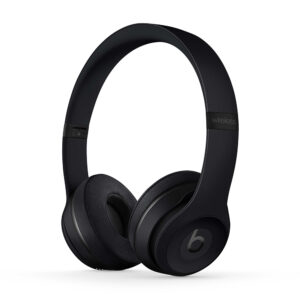Ways of Hearing, Episode 1 & 2
Question #1:
The significant difference between experiencing the real world versus the digital time is related to space and time. If we are experiencing the real world, we are in the present moment, part of what is happening around us. In NYC, for instance, we can hear walking people, somebody talking, cars passing by, beeping of cars, barking dogs, etc. We can experience the moment and its atmosphere, the energy of the short while, including sharing the ambiance with people around us, feeling, and sensing similar sentiments. On the other hand, the digital time is practically locking us into our bubbles. We are distanced from the sound and the real energy of the environment. Thanks to the digital gadgets we can manipulate the atmosphere, and drown the real sound with some other, which is better fitting our imagination about the possible sounds of the current environment. Thanks to the digital world, we can adjust the atmosphere to feel better at the moment, but at the same time, losing the authenticity of the sharing of space and time with others.
Question #2:
I think that Krukowski wanted to say that listening to what is going on around us is very important. We can sense the energy of the space base on the sounds as well. We are not listening to our environment, and we are losing real connection with space. For example, if we walk down the streets with headsets on, we won’t hear the beeping car or shouting person, or possibly even something positive, what could attract our attention.
Question #3:
They were talking about public space today and back in the ’70s. And about the difference between how New Yorkers could use all the public space today and how it was back in time. In the ’70s, public space was for everybody and free expression of oneself. People were, for example, skateboarding on the street and a little further along the way, there was a street band. People could use public space as they pleased. That’s how New York and its public spaces were and how they were used. Today, if anybody will try to do something like that, they will be probably noticed by a security guy from some of the stores around and will be asked to go away, like, for instance, at the Astor Place. Today, we can use only specific places for specific activities and we are told where we can do certain things. The freedom of expression is, in a way, almost gone.
Question #4:
Concert halls were developed and designed for the sound distance from the street/city sounds to be able to hear the music or actors. It was isolation for better sound. Thanks to these halls, we created space, where we can enjoy the not interrupted music. But the earplugs are creating our own space in our heads. It is a different dimension. Earplugs are providing the space free of the noises, but also free of other people and are robbing us of the shared experience with all the other possible sounds added to the memories.
Question #6:
I think the key ideas were related to the fact, that by creating a personal bubble around ourselves by listening to some of the music in our earplugs, we have different sensing of the specific space or happening around us. The picture of our surroundings could be manipulated by the music, that we are listening to in our earplugs. If I imagine watching the streets of NYC while listening to some death metal music, it will create a different memory about the city then if I would listen, for example, Frank Sinatra or just the city sounds itself. But what is important the most is that we are more stalled from the natural environment and our instincts by this, and it is having a bigger impact on us. We don’t know how to socialize as we used to. We share fewer experiences, we don’t talk to strangers, hence we are losing a chance to get some nice memories and interactions. In the end, our experience of life is unnecessarily impoverished.



